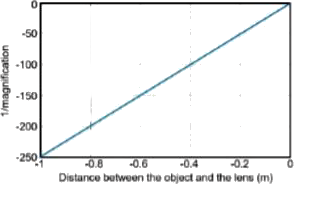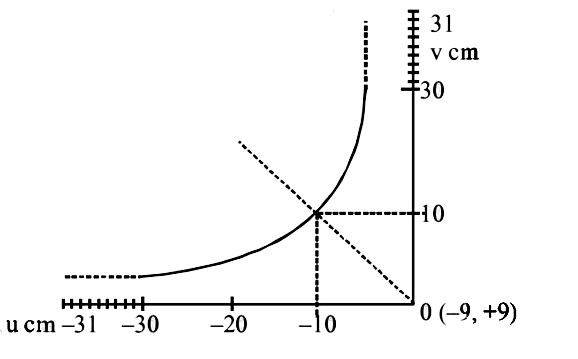The relation between the linear magification m, the object distance u and the focal length f is
m=f−uf
m=ff−u
m=f+uf
m=ff+u
Step by step video & image solution for The relation between the linear magification m, the object distance u and the focal length f is by Physics experts to help you in doubts & scoring excellent marks in Class 12 exams.
Updated on:21/07/2023Similar Questions
The distance between the object and the real image formed by a convex lens is d. If the linear magnification is m, find the focal length of the lens in terms of d and m.
View SolutionChoose the correct alternative corresponding to the object distance 'u', image distance 'v' and the focal length 'F' of a converging lens from the following.
(i) The average speed of the image as the object moves with uniform speed from distance 3F4 to F2 is greater than the average speed of the image as the object moves with same speed from distance F2 to F4
(ii) The minium distance between a real object and its real image in case of a converging lens is 4F where F is its focal length.
View Solution
Knowledge Check
The magnifications produced by a convex lens for two different positions of an object are m1 and m2 respectively (m1>m2). If 'd' is the distance of separation between the two positions of the object then the focal length of the lens is
A√m1m2Bd√m1−m2Cdm1m2m1−m2Ddm1−m2The following graph depicts the inverse of magnification versus the distance between the object and lens data for a setup. The focal length of the lens used in the setup is
 A250 mB0.004 mC125 mD0.002 m
A250 mB0.004 mC125 mD0.002 mThe graph shown relationship between object distance and image distance for a equiconvex lens. Then focal length of the lens is
 A0.50±00.5cmB0.50±0.10cmC5.00±0.05cmD5.00±0.10cmu
A0.50±00.5cmB0.50±0.10cmC5.00±0.05cmD5.00±0.10cmu
Formula stating relation between focal length of a lens, object distance and image distance
View SolutionFor a concave lens of focal length f, the relation between object and image distance u and v, respectively, from its pole can best be represented by (u = v is the reference line) :
View SolutionChoose the correct alternative corresponding to the object distance 'u', image distance 'v' and the focal length 'F' of a converging lens from the following .
The average speed of the image as the object moves with the uniform speed from distance 3F4 to F2 is greater than the average speed of the image as the object moves with same speed from distance F2toF4
The minimum distance between a real object and its real image in case of a converging lens is 4F where F is its focal length.
View SolutionA spherical mirror forms a real image three times the linear size of the object. If the distance between the object and the image is 80 cm, the focal length of the mirror is
View SolutionA convex lens of focal length f is placed somewhere, in between an object and a screen. The distance between the object and the screen is x. If the numerical value of the magnification produced by the lens is m, then the focal length of the lens is
View Solution

